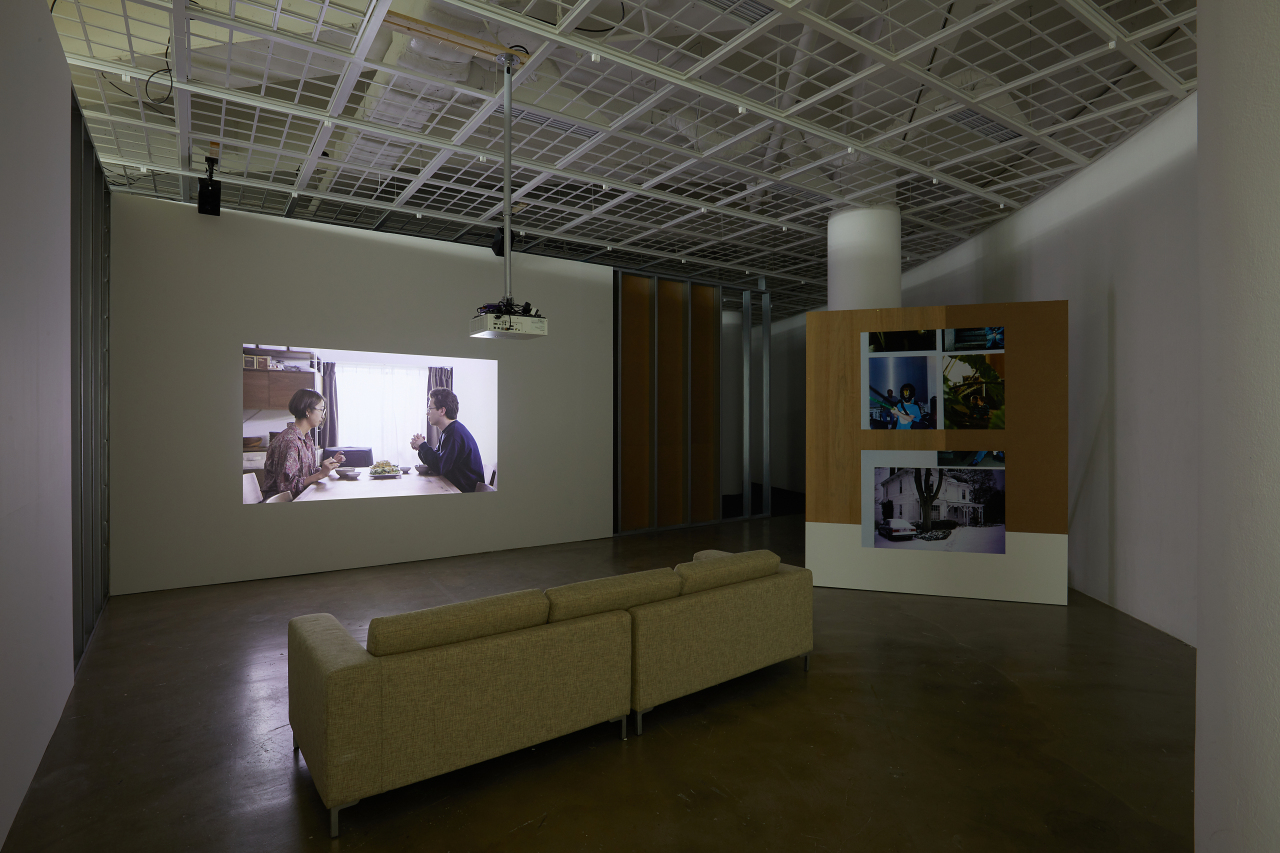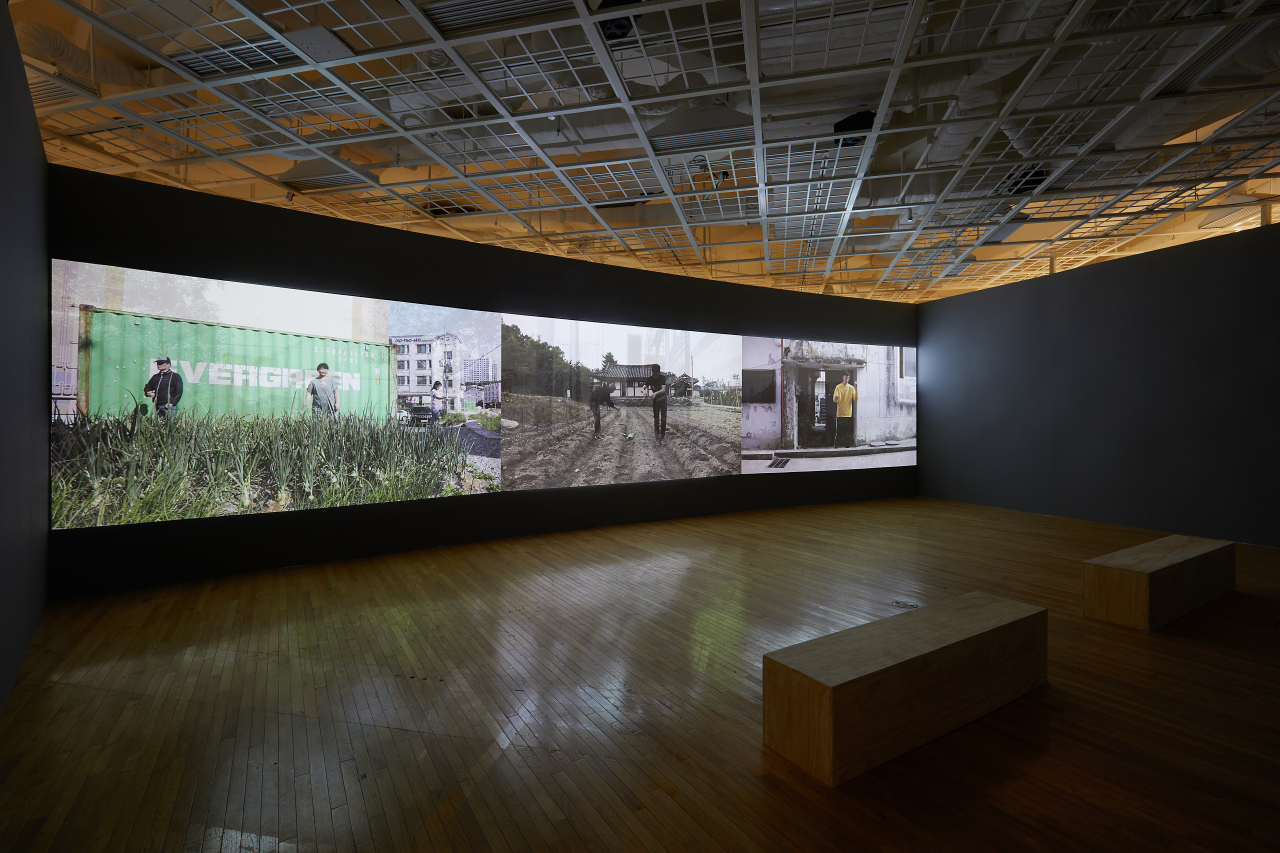Art Sonje Center exhibitions ask how to live together in times of nationalism, racism, pandemic
By Park YunaPublished : Nov. 4, 2020 - 09:50

In recent years, the terms “nationalism,” “refugee crisis” and “racism” have appeared often in media around the world, reflecting the growing indifference to others. It may be argued that this tendency has only grown stronger as the COVID-19 pandemic has forced us to keep a distance from each other.
The question of “How to live together at this time” is presented at three different exhibitions at Art Sonje Center in central Seoul through the works of artists who have experiences of immigration and who witnessed discrimination in different cultures. Their works show us why we should care for others and how we can better understand others with empathy in this time.
“Vulnerable Histories (A Road Movie)” is a documentary film produced by Japanese artist Koki Tanaka, who was Japan’s official representative at the 55th Venice Biennale in 2013. The exhibition is divided into five chapters, corresponding to different parts of the documentary film.
Tanaka’s documentary film focuses on a journey and conversation between two protagonists, a third-generation Zainichi Korean named Woohi and a Japanese Swiss, Christian. “Zainichi” literally means “living in Japan” and usually refers to Koreans who came to Japan during the colonial or early postwar period.
The two visit the site where Koreans were massacred after the Great Kanto Earthquake in 1923, following the false rumor that Koreans set fires and planned a riot against Japanese authorities. The film also touches on anti-Korean demonstrations and hate speech against Zainichi Koreans, which has become more pronounced over the past decade.
“It is quite difficult to stop the tendency of the world becoming more right-wing. I don’t know why that is happening right now,” Tanaka told the press on Friday. “I am rethinking about what the humanity really means. I think art is a place to resist the phenomenon and to think about what we have to do.”
Another exhibition, “Dust Clay Stone” features works by four international artists: Pia Arke from Copenhagen, Denmark; Theresa Hak Kyung Cha who was born in South Korea and migrated to the US where she died in 1982; Bouchra Khalili, based in Berlin and Oslo, Norway; and Alexander Ugay from Kazakhstan. The show features works of art that represent the complex issues of identity faced by individuals experiencing situations of migration.

Ugay, a third-generation Goryeoin -- part of the Korean diaspora in the former Soviet Union -- who was raised in Kazakhstan, uses VHS, or analog video recording, to capture words from the disappearing Goryeomal, a Korean dialect used among ethnic Koreans in the countries of the former Soviet Union.
He also presents a new work that documents the physical movements of Goryeoin and other migrant workers from the former Soviet Union working in Korea. The repeated movements show a complex mixture of emotions, including monotony, meditativeness and community anxieties.
“Publishing as Method” is another exhibition that aims to understand different art publishing cultures through works by eight artists and teams from South Korea, China, Hong Kong and the Middle East.
The three exhibitions run through Dec. 20 at Art Sonje Center in central Seoul. English subtitles are provided for the documentary films. The museum is closed Mondays, and the admission fee is 5,000 won.
By Park Yuna (yunapark@heraldcorp.com)



















![[Today’s K-pop] Treasure to publish magazine for debut anniversary](http://res.heraldm.com/phpwas/restmb_idxmake.php?idx=642&simg=/content/image/2024/07/26/20240726050551_0.jpg&u=)